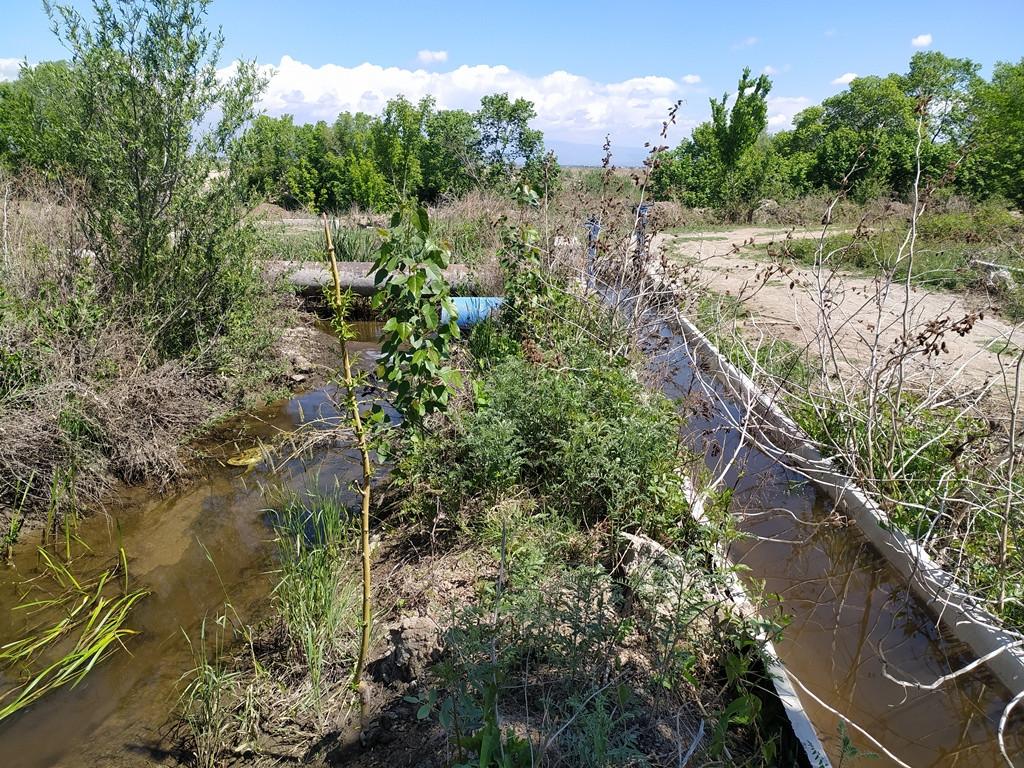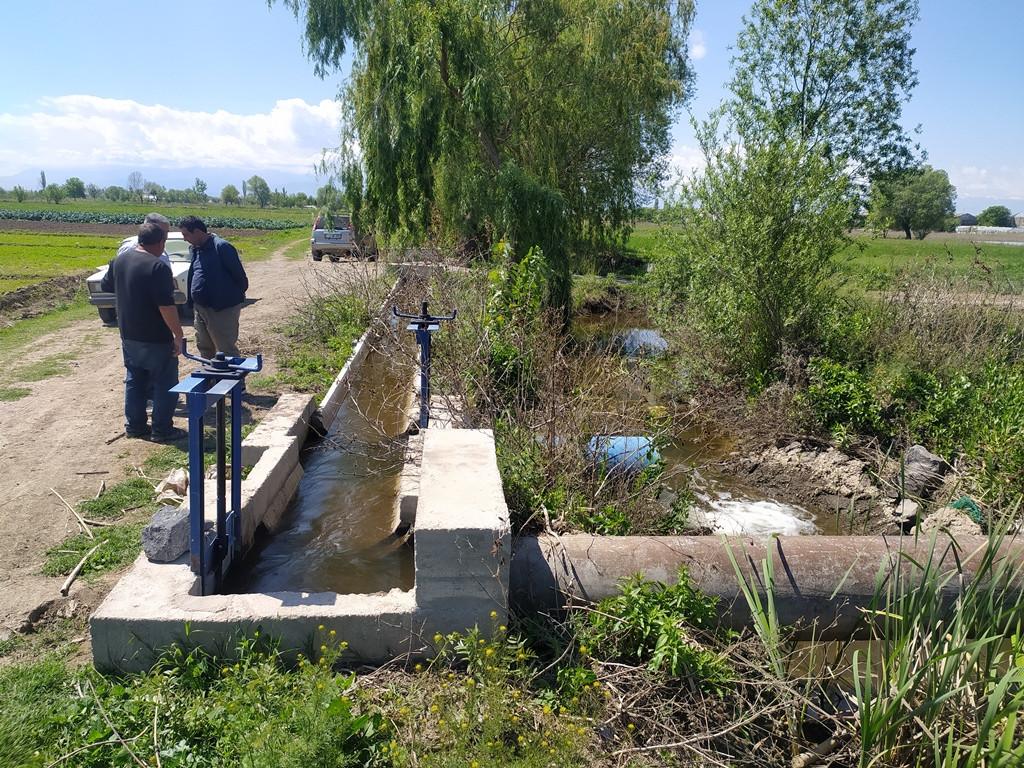
$178,000 Irrigation System Creates More Problems Than Solutions for Farmers in Armenia’s Armavir Province
A 2,709-meter water irrigation pipeline, that cost 80 million drams (US$ 178,000) to build in Armenia’s Armavir Province, has created more difficulties than solutions for local farmers and the area’s water utility workers.
Water overflows from half of the irrigation system, 90% financed by the Eurasian Development Bank and 10% by the Apaga (Future) village municipality, now in its second year of operation.
The overflows result in a trickle of water flowing to agricultural land from the second half of the pipeline.
Tatul Melikyan, who works for the local Etchmiadzin Water Users’ Association, told Hetq that he walks the length of the pipeline twenty times daily to monitor the water flow.
“Large-capacity half-pipes were laid in the small plots, and the capacity was reduced in the large plots,” said Melikyan, adding that he’s forced to constantly alter the flows to make sure that enough water gets to the 142 hectares the systems is supposed to irrigate.
He views the system as costly and ill-conceived.
Etchmiadzin Water Users’ Association (EWAUA) Acting Director Bagrat Hovhannisyan told Hetq that his organization was never consulted in the planning stage of the irrigation system.
Hovhannisyan said the entire system would have to be shut down for weeks to make necessary changes and that hos organization would be held legally responsible for any damages incurred by farmers.
Armenia, with ERBD co-financing, launched the Irrigation System Modernization Program in 2016.
Territorial Development Fund of Armenia’s (TDFA) Executive Director Artur Soghomonyan said the community only voiced its concerns after the system was built and that the pipeline was designed to irrigate the land in question in accordance with then existing water disbursements.
The EWAUA and Mr. Melikyan disputed this claim, saying they had raised the alarm that the capacity of the semi-opened pipeline was insufficient.
Karen Dadoyan, who heads the TDFA’s Water Sector Projects Implementation Branch’s Monitoring Group, told Hetq that farmers using the system must agree to receive irrigation water at the same time
“Water should be used proportionately and should be given to everyone and not to one person from beginning to end. If there are 50-60 water users in that area, then their water use plan should be made so that everyone uses that water at the same time, and not for one person to use it and the others to wait," said Dadoyan.
Dadoyan said that a much larger irrigation canal would have to had been built to satisfy the desires of all users.
He admits a large part of the problems stems from the fact that Soviet-era irrigation schemes are still being followed today.
"There is a need to develop new irrigation schemes to adapt to today. In Soviet times, we had only about 900 water users. Today, the number is 220,000. Also, the plots are now small, and the systems and schemes were designed for large plots of land in the Soviet era,” Dadoyan told Hetq.
 Videos
Videos Photos
Photos

Comments (1)
Write a comment